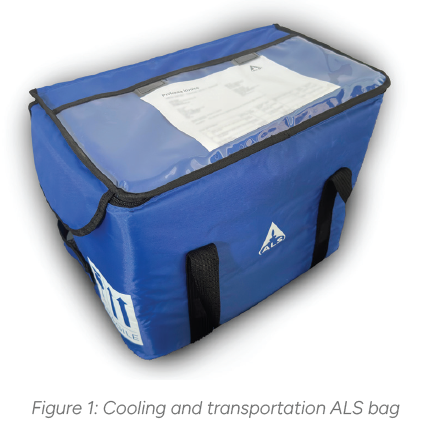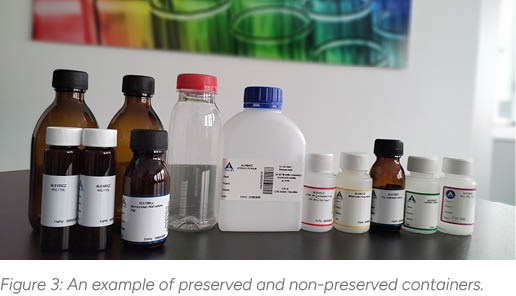Sampling and sampling containers as the foundation for reliable water analyses
Published: October 2024
Download PDF
EnviroMail_20_Europe_ Sampling and Sampling Containers as the Foundation for Reliable Water Analyses

Proper sampling process, along with the selection and utilisation of appropriate sampling containers, represent two critical steps prior to the commencement of laboratory analyses that significantly influence the accuracy of environmental analyses and, consequently, the final reported results. Proper sampling and container selection ensure the representativeness, precision, and reliability of reported data, which can significantly impact subsequent decision-making processes.
Quality Assurance in Water Sampling
Results of laboratory analyses are used for a wide range of decisions, management of various environmental processes, manufacturing, and, last but not least, public health. In environmental laboratories, a stringent laboratory quality management system must be implemented and rigorously monitored.

Such system incorporates regular measurement of quality control samples such as blank samples, duplicates, and laboratory control samples. However, less attention is often paid to ensuring quality during initial sampling and transport of samples to the laboratory. These processes are integral to the analytical procedure, with their impact occurring before the samples reach the laboratory. Inappropriately collected or contaminated samples can lead to inaccurate or misleading data and information. Therefore, it is essential to adhere to proper sampling procedures and use appropriate materials, containers and equipment.
Sampling and Handling of Water Samples
Water sampling is a complex process that requires expertise and knowledge. The general requirements for water sampling are specified in the international standard EN ISO 5667-3: 2024 "Water quality - Sampling - Part 3: Preservation and handling of water samples". This document outlines and describes basic definitions and terms, as well as requirements for sampling containers, transport, identification, and storage of samples.
ALS Sampling Containers
ALS laboratories continuously work to improve laboratory service. ALS laboratories routinely follow scientific publications, national and international standards and perform testing of sampling containers, including stability studies. All sampling container batches provided by ALS are regularly tested to detect any unexpected changes during their manufacturing process or distribution. All standard sampling containers provided by ALS are intended for single-use only to ensure the quality of provided containers.
Selection of Sampling Containers
The selection of an appropriate container can have a significant impact on the measured results. Typical phenomena include sorption of the analyte, contamination of the sample, or possible loss of the analyte of interest. Therefore, it is essential to ensure and verify the suitability for the intended purpose:

- Suitability of the material (plastic/glass)
- Chemical resistance
- No adsorption for specified analyte
- Purity of the material
- Leak-proof / airtight container
An important parameter is also the volume/size of the sampling container. ALS laboratories emphasize the miniaturisation of sampling containers. For selected analyses, ALS laboratories use containers of volumes as low as 40 mL, 60 mL, or 100 mL, for instance.
ALS laboratories regularly use sampling containers with a pre-loaded chemical preservative (fixation) that stabilizes the analyte of interest. If a sampling container contains a chemical preservative, it should never be rinsed prior to use. Chemical preservation is an effective tool that significantly extends the stability of target analyte and thereby the quality of results. Changes of the sample composition have various physical-chemical reasons, a brief overview of which is provided in Table 1 with examples of affected parameters.

A crucial part of proper sample handling is the physical preservation of the sample, which involves storing the sample at a temperature of 2-8 °C and in darkness.

The effect of chemical preservation can be illustrated by an example below (Figure 4). The chart shows stability study for the determination of ammonium ion using an identical sample (effluent from a wastewater treatment plant; WWTP) with and without a chemical preservation. Sample without preservation must be processed within 48 hours, otherwise there is a significant decrease of target parameter, thus false negative results. Contrary to this, the preserved sample is stable for more than 14 days.
Related EnviroMail
EnviroMail_03_Europe: Proper Water Sampling Practise Prior to Metals Determination_May2023
References
ISO 5667-3:2024 - Water quality — Sampling — Part 3: Preservation and handling of water samples


